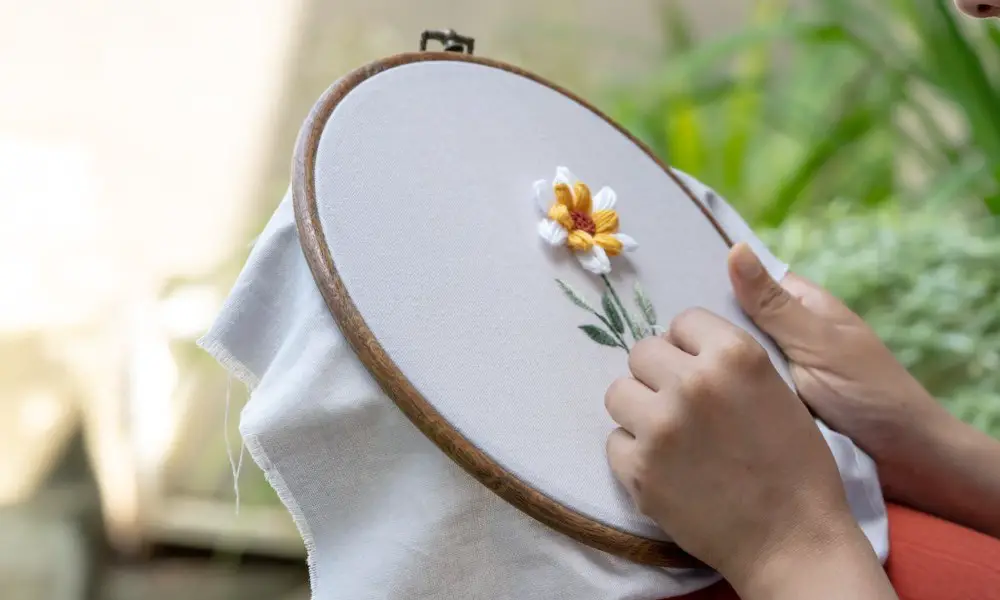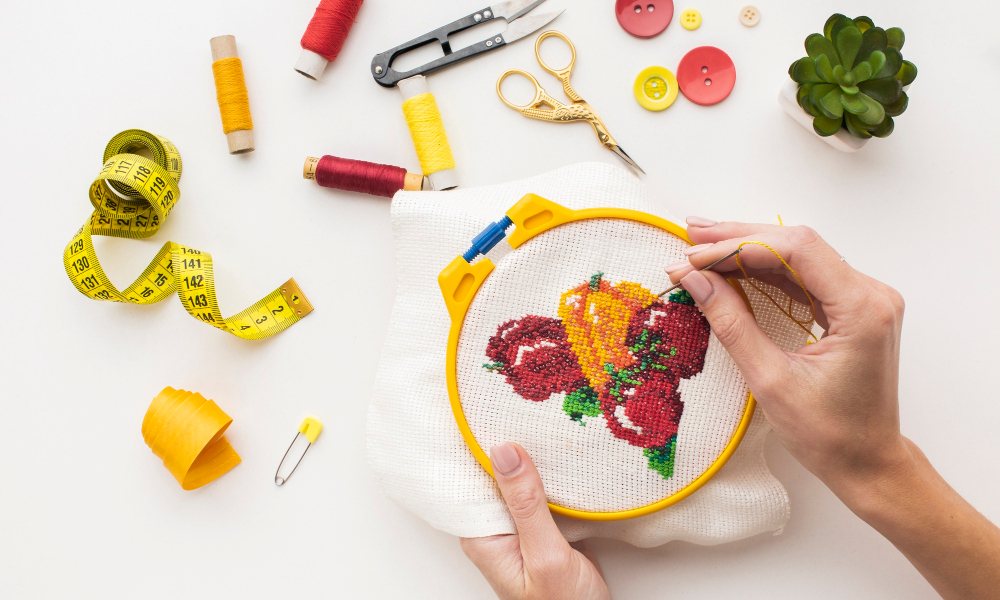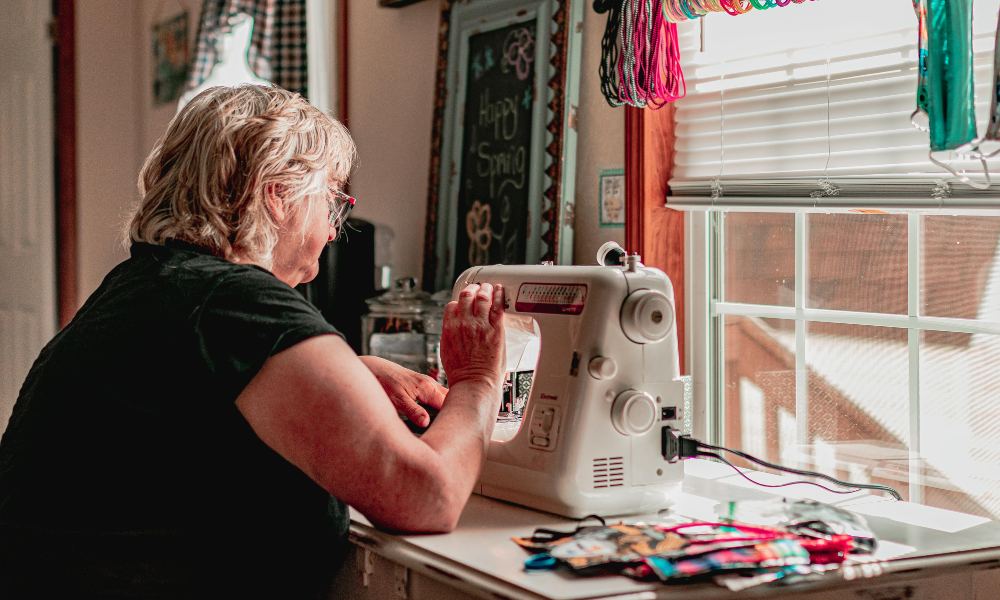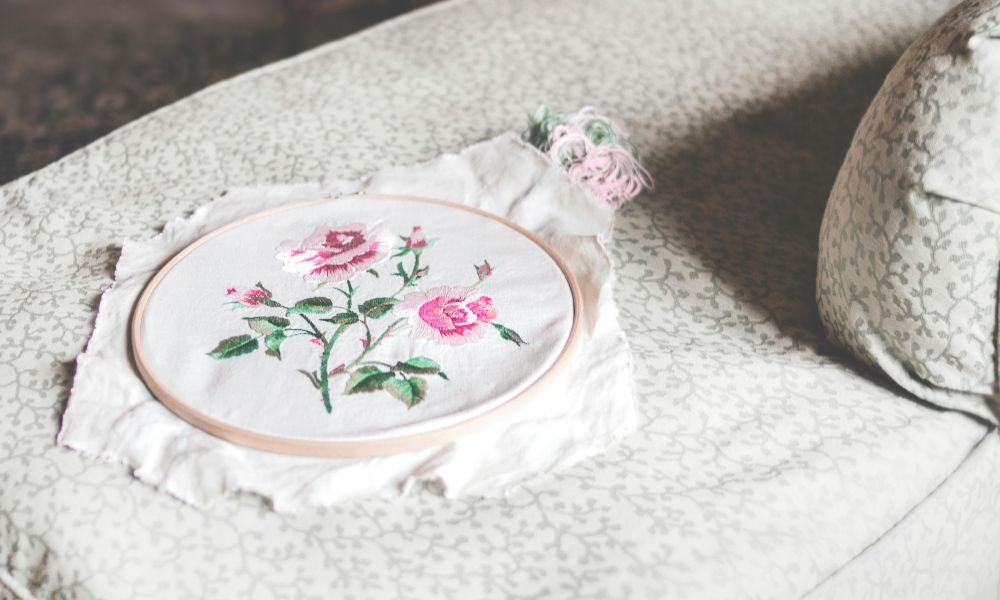Have you ever finished a beautifully embroidered piece only to find the backing won’t peel off cleanly? Removing embroidery once stitched can be tricky business. It is possible to prevent damaging the fabric underneath or leaving behind stubborn threads if you are cautious.
Luckily, removing embroidery with backing can be a smooth process with the right tools and techniques. So grab your seam ripper and stitch eraser—we’ll walk you through failproof methods to keep your fabric pristine.
What Purpose Does Backing Serve in Machine Embroidery?
Before we dive into removal methods, it helps to understand why embroidery backing exists in the first place. Backing provides stability for embroidery stitches as the machine sews them. This prevents the fabric from puckering or distorting. Common backing materials are tear-away stabilizers, cut-away stabilizers, and adhesive backings.
These materials offer stability initially but must be removed once the embroidery is complete. Taking the time to remove the backing properly helps the embroidery maintain its shape and lie flat.
Must-Have Tools for Removing Embroidery Backing

Taking on backing removal without the right gadgets is a recipe for snags and headaches. Arm yourself with these handy tools first:
Tiny Sharp Scissors or Snips
Sharp embroidery snips are a lifesaver for navigating tricky spots like corners or intricate details. They allow precise trimming of excess backing in tight areas.
Seam Rippers
These nifty tools easily slice through embroidery threads to lift the stitching off the backing beneath. Use the pointed tip to get under stitching edges.
Stitch Erasers
Small fragments of thread or backing can be removed using specialized tools that work like erasers, gently sanding them away. They remove stubborn bits without damaging fabric.
Tweezers
Like tiny fingers, tweezers help grip backing edges to peel away without touching the fabric. They also pluck out stray threads.
Lint Brushes and Rollers
Finally, lint brushes and rollers neatly clean away any remaining wisps of backing or thread.
Step-By-Step: Removing Embroidery Backing without a Hitch
Ready to tackle that stubborn backing? Just take it slow and steady. Follow these key steps:
1. Carefully Assess the Stitching and Fabric
First, closely examine the embroidery, noting thread types, stitch styles, backing material, and fabric. This helps determine the best removal approach. Also, check for delicate, looser areas. Go slowly here later.
2. Look for Loose Thread Ends to Pull Gently
Search for any thread tails you can gently pull to loosen stitches from the backing. This “undoes” edges smoothly. Use tweezers if needed to grasp tiny threads.
3. Lift Corners a Bit, Then Snip Backing
Once you’ve found a loose edge, gently lift it from the fabric with tweezers. Snip just backing threads with embroidery scissors, leaving the fabric intact. Repeat, moving outwards from this corner.
4. Use Seam Ripper Under Edges
Slide seam ripper tip under lifted edges of stitching to slice connecting threads. Lift and progress outward, keeping the blade flush with the backing to avoid cutting fabric below.
5. Utilize Stitch Erasers for Stubborn Bits
For clingy backing fragments stuck in crevices of detailed designs, rubbing gently with a stitch eraser removes them easily.
6. Double-Check No Backing Remains Before Removing Hoop
Use a lint roller/brush to catch any last bits when the backing seems removed. Check all areas before removing the embroidery hoop so stitches don’t loosen.
Handy Tips for Hassle-Free Backing Removal
Removing embroidery backing takes some finesse. Keep these pointers in mind:
- It starts loosening from a hidden spot underneath rather than visible areas on delicate fabrics like silks or satins. This avoids initially causing surface damage.
- Choosing the backing type matters. Heavy cut-away stabilizers are tedious to remove from fabrics like knits or velvets. Tear-away backings lift off much more manageable.
- Use the tiniest scissors possible for detailed embroidery to avoid clipping and inadvertently cutting individual stitches. More significant snips are fine for simpler designs with less intricate areas.
Standard Removal Mistakes to Sidestep
While backing removal isn’t complicated, beginners make some common slip-ups. Avoid these issues with intelligent prevention:
Rushing the Process – Slow down! Running leads to fabric damage. Take your time loosening edges, clipping threads, and erasing spots.
Using Wrong Tools – Don’t just grab old scissors from your sewing box! Embroidery requires micro-sharp snips to trim excess backing without shredding threads or fabric intricately.
Frequently Asked Questions
What’s the best way to loosen stubborn embroidery backing?
Use small, sharp scissors or embroidery snips to lift the edges of the stitching carefully. Then, slide the tip of a seam ripper underneath to sever the threads attaching it to the backing material. Lift slowly and patiently to avoid damaging threads or fabric.
My embroidery design has lots of satin stitching. Will that be harder to remove backing from?
Satin stitching has dense coverage, which attaches tightly to the embroidery backing. Take extra care of slowly lifting edges and clipping threads to avoid distorting or loosening the stitches as you work. Tweezers help grip and lift when removing backing from satin-stitched areas.
What should I do if my fabric gets a hole while removing the embroidery backing?
First, stop removal to avoid further damage. Place a small piece of matching fabric behind the hole and carefully hand-stitch closed using tiny stitches with embroidery thread compared to the fabric color. Knot on the wrong side, flip over the item, and Make final knots on the embroidery side for invisible mending.
Parting Words on Keeping Embroidery Backing-Free
Removing backing may seem daunting, but having the proper tools and techniques for delicate embroidery work is the secret. Arm yourself with tiny sharp snips, a flush seam ripper, tweezers, and stitch erasers before attempting removal.
Then, slowly start lifting edges, trimming extra backing with care, and erasing stubborn leftover bits. With light pressure and patience, you’ll lift away backing smoothly without distorting stitches or harming the fabric.
After all that beautiful stitch work, keeping embroidery exquisite is worth taking backing removal lightly! Now that you know the drill, you can reveal flawless finished embroidery projects.
What lingering questions do you have about wrestling off embroidery backings successfully? Ask them below!
***
Main image: Freepik




